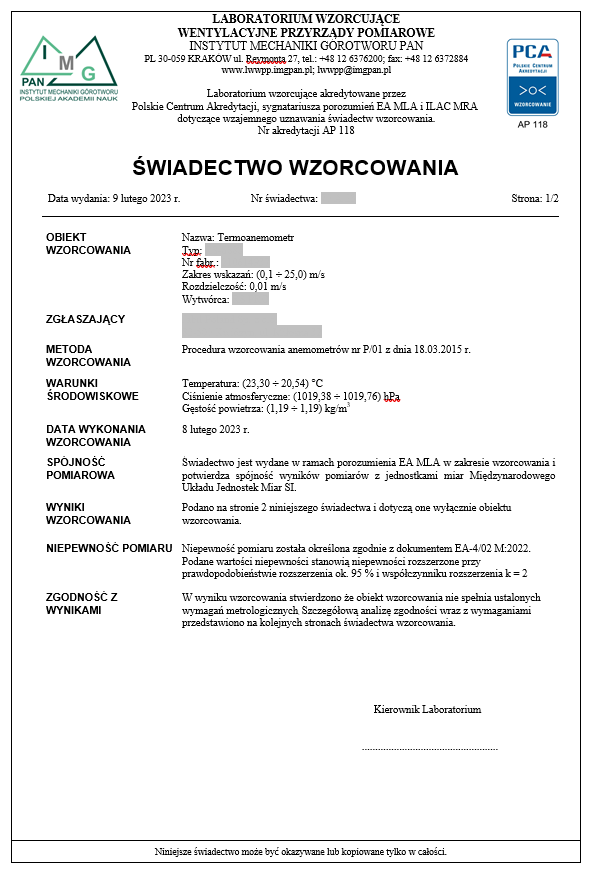Statements of Conformity with specification or requirement is issued at the client’s request.
Statement of Conformity, it is necessary to provide the requirements that the device should meet, as well as the principles of decision-making along with a description of the level of risk of incorrect acceptance of the result. This principle is often associated with the manufacturer’s declared accuracy of the device (limit error). There are several principles of decision-making related to the statements of conformity. They are widely described in the document: ILAC G8:09/2019 Guidelines on Decision Rules and Statements of Conformity. Statement of conformity does not involve additional measurements and is based solely on the results obtained during calibration.
The basic method of decision-making regarding statement of conformity used in our laboratory is the binary method with a simple acceptance rule, where the safety margin w=0. The method assumes a probability of incorrect acceptance of less than 50%. This principle is illustrated in the following figures:


The description of statement of conformity with requirements is part of the calibration certificate and includes a statement of conformity with requirements or not. On the first page of the certificate, we provide this information in the form of:
As a result of calibration, it was determined that the calibration object meets/does not meet the established metrological requirements. A detailed analysis of compliance with the requirements is presented on the subsequent pages of the calibration certificate.
On the subsequent pages of the certificate, a detailed analysis of each calibration point is presented graphically alongside the calibration results.

